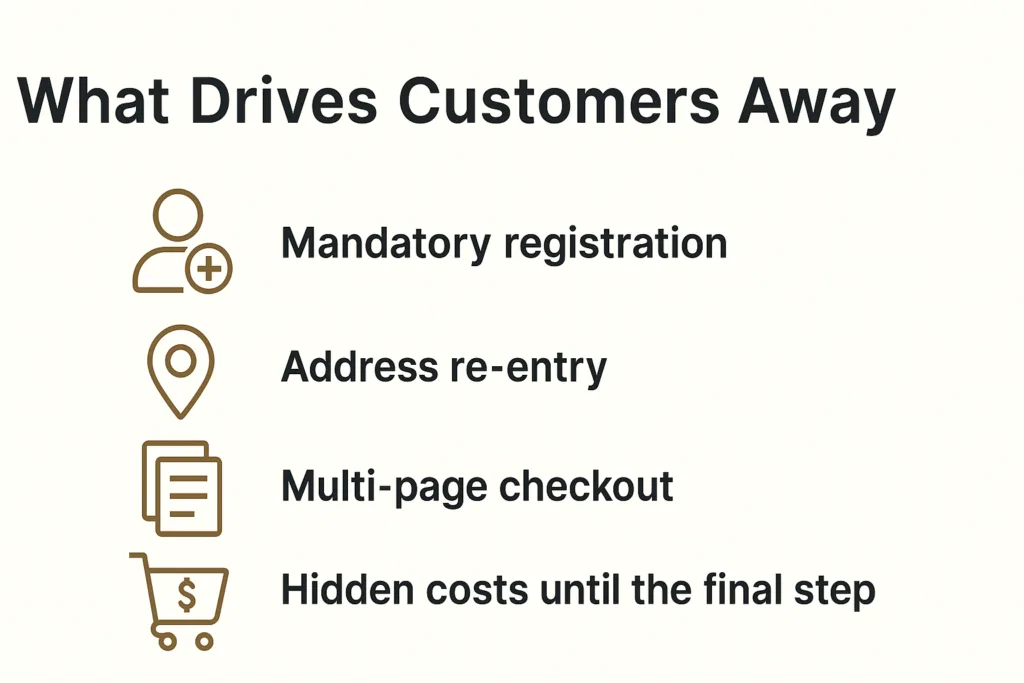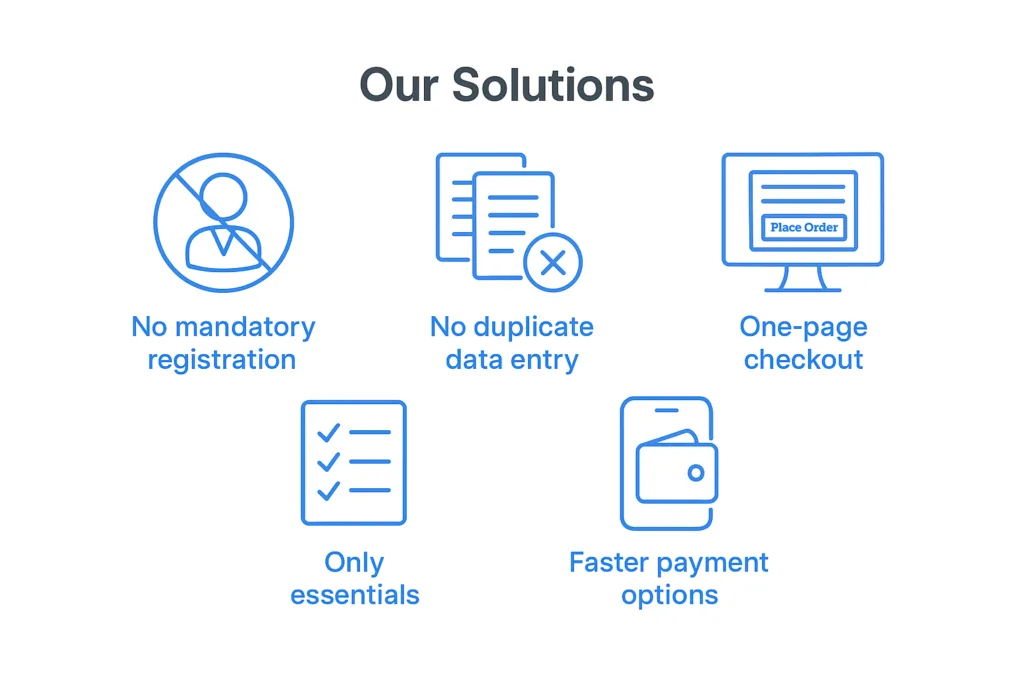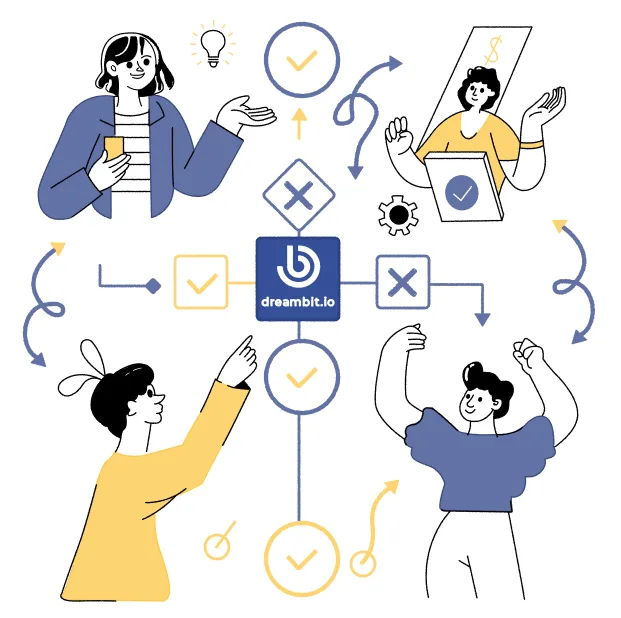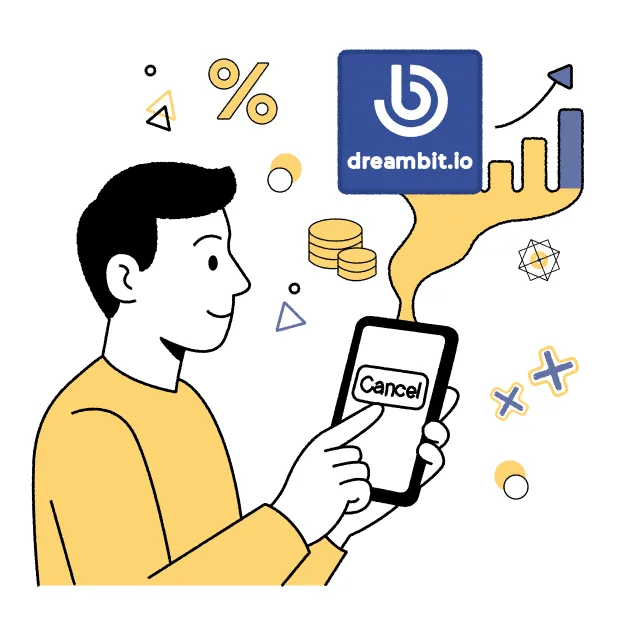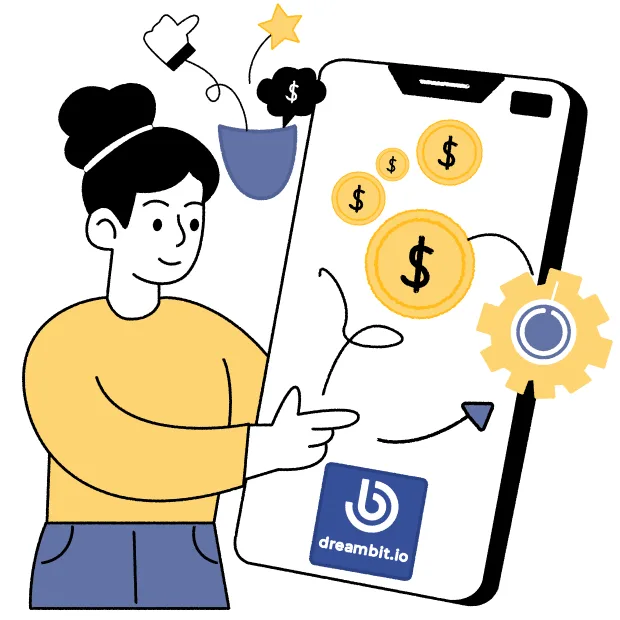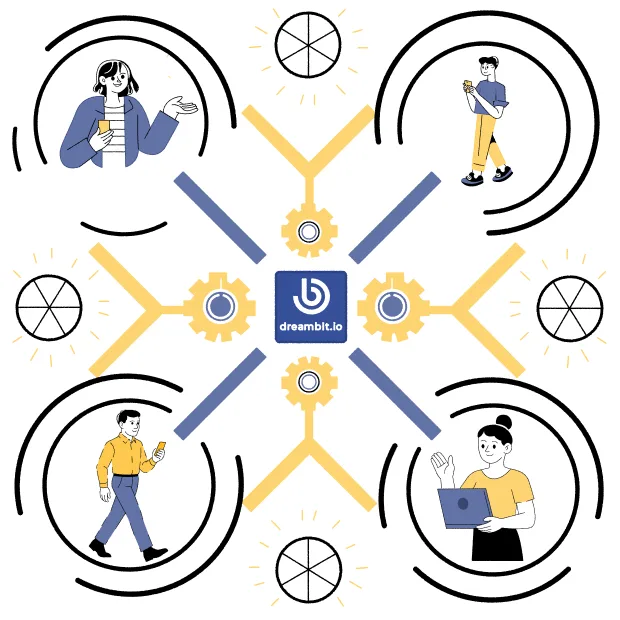- The problem in detail
- Mandatory registration
- Address re-entry
- Multi-page checkout
- Hidden costs until the final step
- Our Solution: Minimalism That Helps Reduce Cart Abandonment
- No mandatory registration
- No duplicate data entry
- One-page checkout
- Only essentials
- Faster payment options
- Improvements at a glance
- The bottom line: The best checkout is an invisible checkout
This website uses cookies so that we can provide you with the best user experience possible. Cookie information is stored in your browser and performs functions such as recognising you when you return to our website and helping our team to understand which sections of the website you find most interesting and useful.
